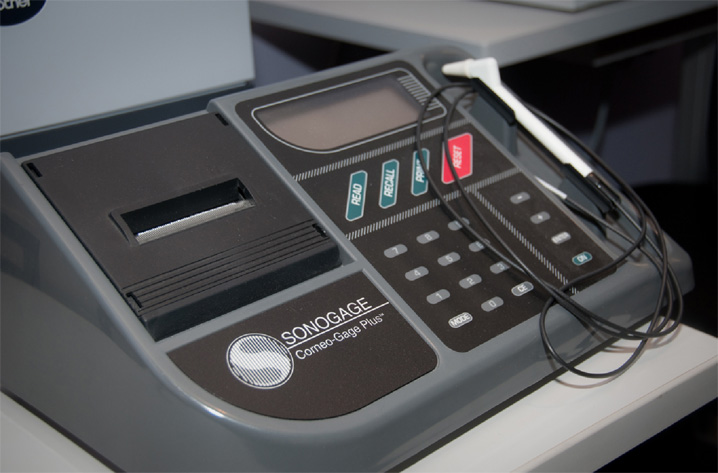PACHYMETRY

pachymeter is a medical device used to measure the thickness of the eye’s cornea. It is used prior to a Corneal Molding evaluation, LASIK surgery, and is useful in screening for patients suspected of developing glaucoma. Modern design incorporates ultrasound technology for measurement of the thickness. Earlier models were based on optical principles.
Until recently, pachymetric measurement of central corneal thickness (CCT) has been the exclusive territory of corneal specialists. After all, is an important tool to evaluate the health of the cornea, measuring its thickness to assess a capacity to pump out excess fluid and maintain clarity. Corneal specialists and general ophthalmologist
CCT measurements on patients with (or suspected to have) glaucoma.
A variety of equipment are available for optometrist to choose from. The most commonly used equipment uses ultrasound technology and is the clinical standard. Most of the clinical work studying the association between CCT and glaucoma has relied on ultrasound pachymetry. Ultrasound require contact with the cornea; the optometrist delivers a drop of anesthetic to the eye and applies a sterile pachymeter tip gently onto the cornea. Ultrasounds continue to be popular, affordable and accurate, but a newer line of pachymeter that use optical low – coherence reflectometry technology may enhance accuracy and allow non – contact pachymetry
